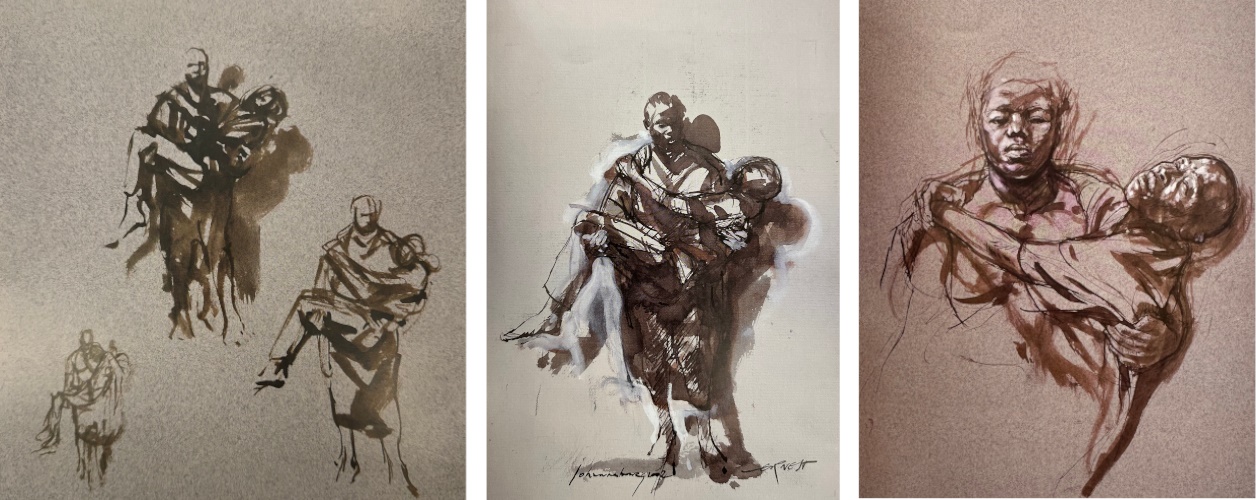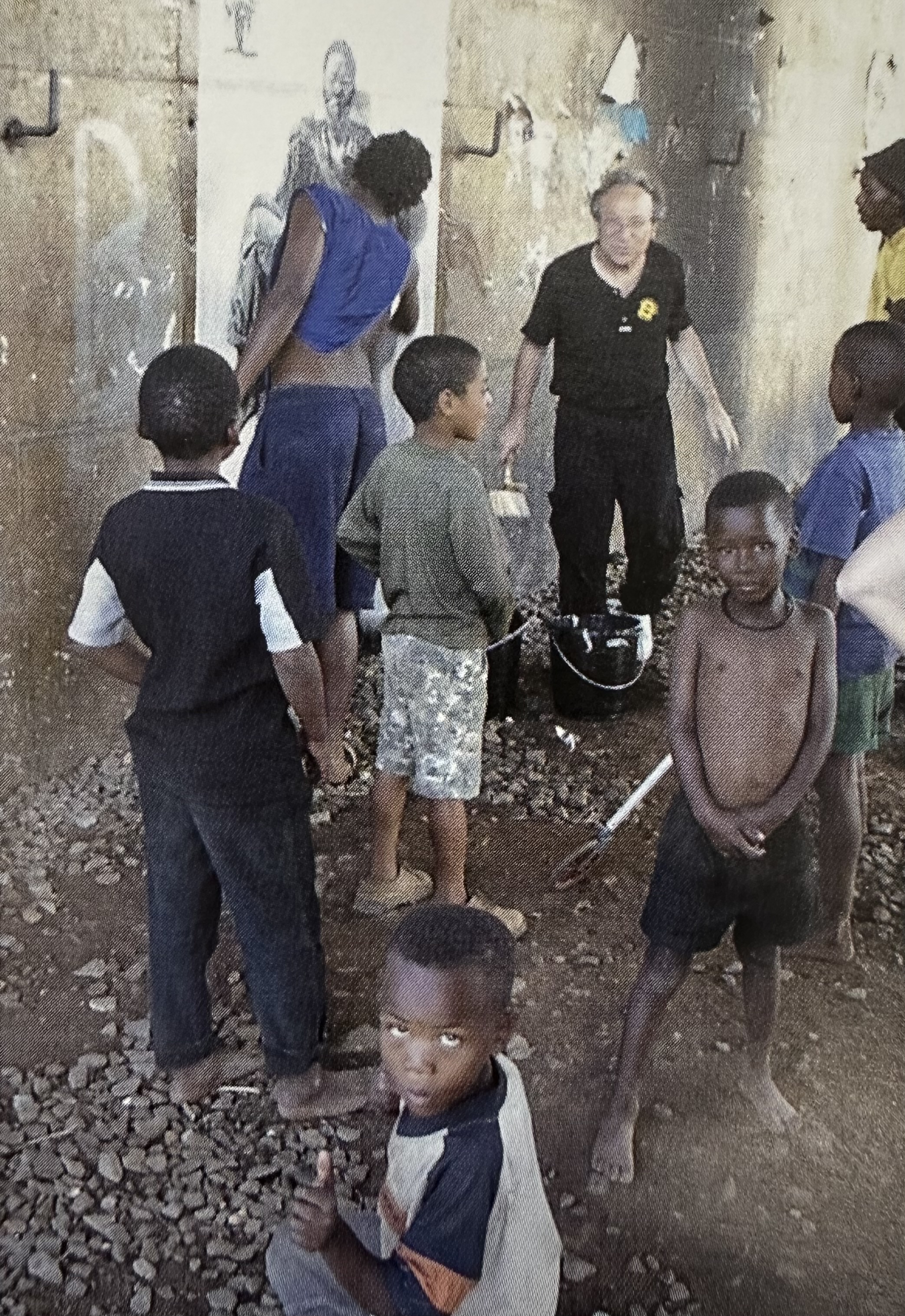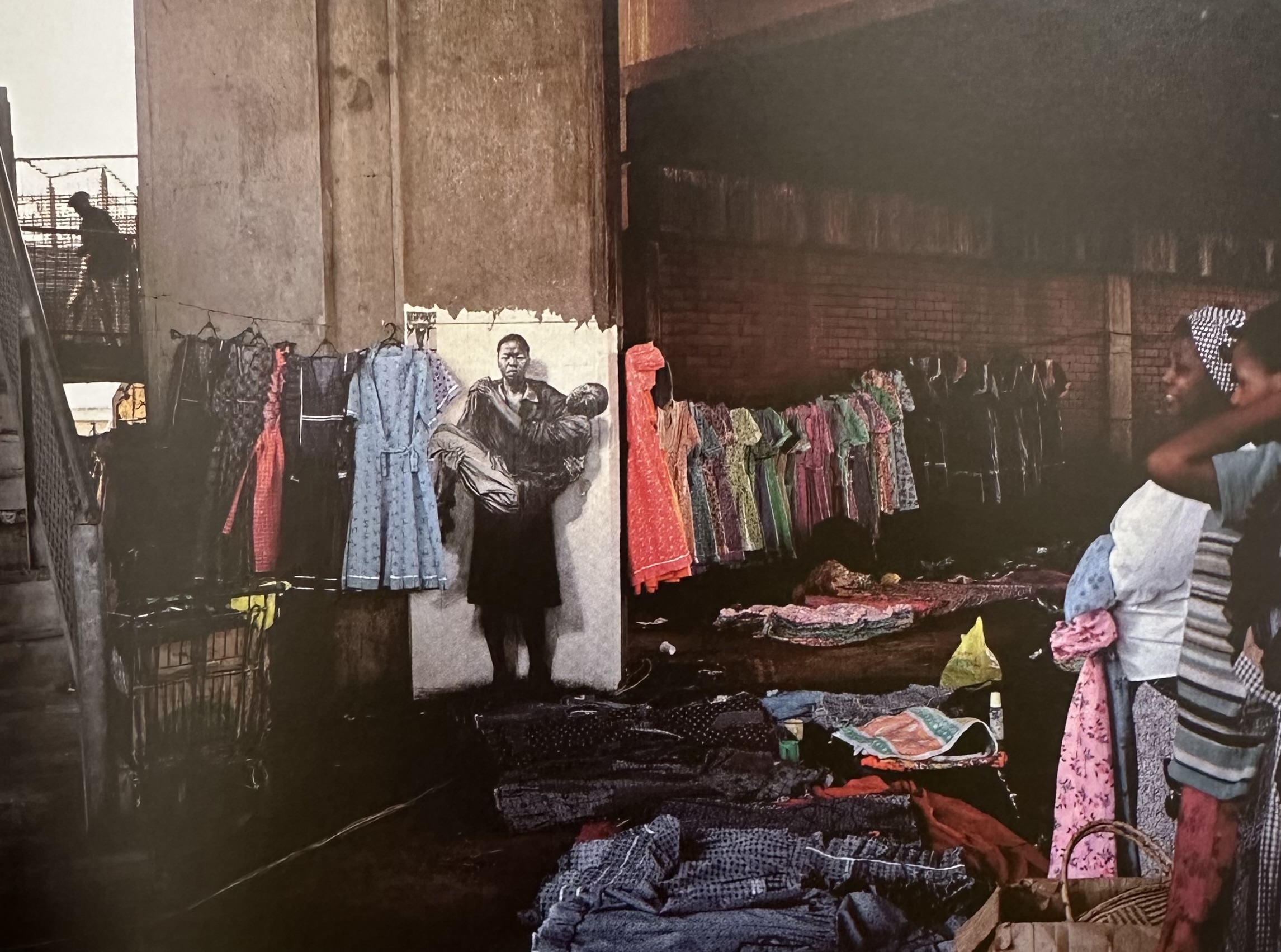11th Sep, 2024 19:00
20th Century & Contemporary Art
54
Ernest Pignon-Ernest (France 1942-)
Soweto-Warwick, a drawing, photographs & photolithograph
charcoal and gouache on paper drawing;
three digital colour photographs;
photolithograph on newspaper
Artwork date: 2002
Signature details: the drawing signed and inscribed with a dedication bottom right
Exhibited: Various drawings and reproductions from the project exhibited at Galerie Lelong, Paris, Pignon-Ernest, 13 March to 10 May 2003.
Literature: Barbancey, P. (2003). Pignon-Ernest, Soweto-Warwick-2002. Paris: Galerie Lelong.
Condition Report
The overall condition of the drawing and each photograph is excellent. These elements are framed together.
The overall condition of the poster is fair, with tears along the top edges and general handling ware, but is consistent with the use of newspaper and the nature of the project.
Please note, we are not qualified conservators and these reports give our opinion as to the general condition of the works. We advise that bidders view the lots in person to satisfy themselves with the condition of prospective purchases.
charcoal and gouache on paper drawing;
three digital colour photographs;
photolithograph on newspaper
Artwork date: 2002
Signature details: the drawing signed and inscribed with a dedication bottom right
Exhibited: Various drawings and reproductions from the project exhibited at Galerie Lelong, Paris, Pignon-Ernest, 13 March to 10 May 2003.
Literature: Barbancey, P. (2003). Pignon-Ernest, Soweto-Warwick-2002. Paris: Galerie Lelong.
(2)
drawing: 33.5 x 53 cm; photographs: each 17.5 x 13 cm; photolithograph: 206.5 x 120 cm; framed size of the drawing and photographs: 70 x 71 x 2 cm
Provenance:
Private collection, Cape Town.
Gifted from the artist.
ABOUT THE ARTWORK
Ernest Pignon-Ernest, often hailed as the pioneer of street art, is a French artist whose influence has rippled across generations, laying the groundwork for contemporary icons like Banksy and JR. His work, rooted in activism, serves as a powerful response to social injustices around the globe. With interventions that blend the boundaries between art and the urban landscape, Pignon-Ernest's creations are not just visual statements but catalysts for thought and change.
In 1974, Pignon-Ernest's home city, Nice, in the south of France, established a partnership with Cape Town, South Africa, at the height of apartheid. The collaboration, which ignored the brutal realities of racial segregation in South Africa, sparked a deep sense of anger in the artist. On the eve of the official inauguration and celebrations, Pignon-Ernest took to the streets of Nice, lining them with images of a black family behind barbed wire – a stark visual protest against the hypocrisy of celebrating a partnership with a city entrenched in institutionalised racism. This powerful act of resistance not only highlighted the exclusion of black communities from such dialogues but also marked the beginning of Pignon-Ernest's deep ties with South Africa.
.jpeg)
Nice, 1974
His commitment to anti-apartheid activism continued in 1983 when he led the formation of the group Artistes du monde contre l’apartheid (Artists of the World Against Apartheid). This group called on artists worldwide to contribute their work to raise awareness and foster global opposition to racism. The response was overwhelming, with contributions from renowned artists like Robert Rauschenberg, Roy Lichtenstein, Sol LeWitt, Malangatana Ngwenya and Gavin Jantjes. The collection toured globally, spreading its powerful message against apartheid, and was eventually donated to South Africa in 1995 in the presence of Nelson Mandela.
Pignon-Ernest's connection with South Africa deepened further in 2001 when the French Institute of South Africa (IFAS) invited him to conceive a project in the country, with his focus turning to the HIV/AIDS pandemic. His work during this period was marked by a poignant use of imagery deeply rooted in the country’s iconography and history. In a profoundly moving piece, the artist reimagines Sam Nzima’s photograph of Hector Pieterson, the young boy whose death became a symbol of the anti-apartheid struggle after the 1976 Soweto Youth Uprising, drawing a parallel between the political violence of the past and the health crisis at the time. The work also notably draws on the visual language of Michelangelo’s Pietà – a symbol of mourning and loss. The woman in this artwork cradles a lifeless man, a powerful commentary on the role of women during the HIV/AIDS pandemic, who often bore the weight of caregiving in the absence of adequate social support. The softness in the faces of these Pietà-like figures, devoid of the overt terror evident in the Hector Pieterson photograph, suggests a quiet, pervasive sorrow – a reflection of the insidious nature of HIV/AIDS as a silent, yet devastating, killer.
Pignon-Ernest's process is as meticulous as it is thoughtful. He begins with extensive research and detailed preparatory drawings before translating them into a life-size drawing that is reproduced as a poster on newsprint. These pieces are not confined to the walls of galleries; instead, they are pasted onto the very streets that inspire them, merging art with life in the most literal sense.

Preparatory drawings
For the Soweto-Warwick project, an undertaking of several visits to South Africa over 18 months, the artist visited with local communities, and consulted medical experts and researchers in KwaZulu-Natal, culminating in preparatory sketches in Johannesburg. The project then took place in 2002 in Warwick Junction in Durban – a bustling transport hub of 600,000 people a day – and in Kliptown, Johannesburg. The artist ensured that his images became part of the landscape, not just as art but as powerful reminders of the ongoing struggles faced by many South Africans. To complete his process, Pignon-Ernest quietly photographs these interventions, capturing the fleeting moments when his art interacts with its environment and its people, further solidifying its message.

Soweto

Durban, Warwick
The lot offered here represents a holistic embodiment of Pignon-Ernest's process and the Soweto-Warwick project – featuring the masterfully completed preparatory drawing, the poster, and the artist’s photographs, all integral to his art-making.
Remarkably, this is the first time such a comprehensive collection of his work is being offered – and more significantly in South Africa, marking an important moment in both the artist's career and the local art scene. This offering not only provides a deep insight into his creative process but also immortalises a pivotal moment in the history of art and activism in South Africa.
COLLECTOR'S NOTES
- Ernest Pignon-Ernest was born in 1942 in Nice; he lives and works in Paris.
- The artist has presented his work in numerous museums, institutions and cities around the world including in Algiers, Brest, Avignon, Beijing, Chile, Durban, Ivry-sur-Seine, Lille, Lyon, Munich, Naples, Nice, Ostia, Paris, Rome, Soweto, Venice, among others.
- Pignon-Ernest has also created numerous scenographies for theatre and ballet, and entered the Académie des Beaux-Arts in 2021.
- Pignon-Ernest's work has attracted the interest of Francis Bacon; who had been compiling a file on the artist’s work since 1976, and Barthélémy Toguo. French artist JR regards Pignon-Ernest as “his inspiration”.
- Invited by the Fondation Louis Vuitton in Venice this year, Pignon-Ernest is currently exhibiting I am Other, as part of their hors-les-murs (beyond the walls) program, a collateral event for the 60th edition of the Venice biennale. I am Other is curated by Suzanne Pagé and Hans Ulrich Obrist in dialogue with Dominique Gonzalez-Foerster and is accompanied by a publication. The exhibition can be seen until 24 November 2024.
You can place an absentee bid through our website - please sign in to your account on our website to proceed.
In the My Account tab you can also enter telephone bids, or email bids@aspireart.net to log telephone/absentee bids.
Join us on the day of the auction to follow and bid in real-time.
The auction will be live-streamed with an audio-visual feed.
Currency conversions are based on the exchange rate at the auction's start time and date. Bidders should verify the current exchange rate on the day of the sale. All invoices and payments must be made in South African Rands.
IMPORTANT NOTICE:
Logistics
While we endeavour to assist our Clients as much as possible, we require artwork(s) to be delivered and/or collected from our premises by the Client. In instances where a Client is unable to deliver or collect artwork(s), Aspire staff is available to assist in this process by outsourcing the services to one of our preferred Service Providers. The cost for this will be for the Client’s account, with an additional Handling Fee of 15% charged on top of the Service Provider’s invoice.
Aspire Art provides inter-company transfer services for its Clients between Johannesburg and Cape Town branches. These are based on the size of the artwork(s), and charged as follows:
Small (≤60x90x10 cm): R480
Medium (≤90x120x15 cm): R960
Large (≤120x150x20 cm): R1,440
Over-size: Special quote
Should artwork(s) be collected or delivered to/from Clients by Aspire Art directly, the following charges will apply:
Collection/delivery ≤20km: R400
Collection/delivery 20km>R800≤50km
Collection/delivery >50km: Special quote
Packaging
A flat fee of R100 will be added to the invoice for packaging of unframed works on paper.
International Collectors Shipping Package
For collectors based outside South Africa who purchase regularly from Aspire Art’s auctions in South Africa, it does not make sense to ship artworks individually or per auction and pay shipping every time you buy another work. Consequently, we have developed a special collectors’ shipping package to assist in reducing shipping costs and the constant demands of logistics arrangements.
For buyers from outside South Africa, we will keep the artworks you have purchased in storage during the year and then ship all the works you have acquired during the year together, so the shipping costs are reduced. At the end of the annual period, we will source various quotes to get you the best price, and ship all your artworks to your desired address at once.
Aspire Art will arrange suitable storage during, and cost-effective shipping at the end, of the annual period.
Collections
Collections are by appointment, with 24-hours’ notice
Clients are requested to contact the relevant office and inform Aspire Art of which artwork(s) they would like to collect, and allow a 24-hour window for Aspire Art’s logistics department to retrieve the artwork(s) and prepare them for collection.
Handling Fee
Aspire Art charges a 15% Handling Fee on all Logistics, Framing, Restoration and Conservation arranged by Aspire.






